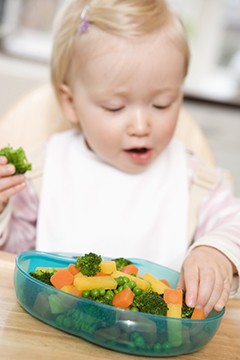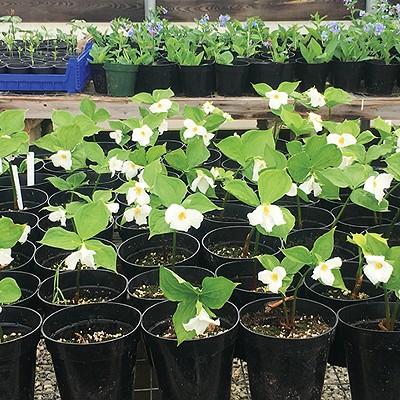It’s never too late to adopt better eating habits and experiment with natural, fresh and whole foods. Avoiding processed foods and added sugar are keys to eating a more nutritious diet. People of all ages can benefit by eating more vegetables and unprocessed foods. Many who change their diet, instead of “going on a diet,” discover just how delicious these foods can be. However, there is increasing evidence that introducing babies to a range of whole foods around the age of six months can lead to less picky eaters and better health in the future.
Many scientists now believe that children’s taste preferences are established before they learn to walk. There is a “flavor window,” and before the age of one, babies are more open to new flavors than they ever will be again. The American Heart Association recommends no added sugars before the age of two. Sugar is extremely addictive, so it makes sense to introduce a variety of foods well before exposure to sugar.
At the age of six months, babies are typically spoon-fed rice cereal and pureed foods before transitioning to solid foods. “Baby-led weaning” and “baby-led feeding” are alternatives to that standard approach. Instead, babies sit with the family during meal time, are given pieces of food in sizes and shapes and textures they can handle, and are encouraged to explore a variety of foods and textures. Finger foods help with oral and motor development and are believed to reduce the risk of babies becoming picky and fussy eaters. Baby-led feeding also encourages confidence and independence. Babies are ready when they can sit up with support and can hold their head and neck still, which is often around six months.
This approach helps babies develop chewing skills, eye-hand coordination and manual dexterity and allows them to discover a wide range of healthy foods. Two books provide valuable information about the benefits of baby-led feeding and help guide parents on how to carry this out. Baby-Led Weaning, The Essential Guide to Introducing Solid Foods and Helping Your Baby to Grow Up a Happy and Confident Eater, by Gill Rapley and Tracey Murkett, takes a stricter approach, avoiding pureed foods altogether. Baby-Led Feeding, A Natural Way to Raise Happy, Independent Eaters, by Jenna Helwig, is a more flexible approach through a mixture of whole foods and purees.
Until the age of one, babies are still getting nearly all of their nutrition from breast milk or formula. The early stages of introducing finger foods are more about exploration than nutrition. The intent is to follow the baby’s lead. Babies roll over, crawl, walk and talk when they are ready. “Why should feeding be different?” say advocates of baby-led feeding.
Baby-led feeding also leads to “greater satiety responsiveness.” Babies allowed to self-feed are more likely to eat until they are full and stop before they eat too much. Additionally, many experts believe that introducing allergenic foods early, between the ages of four and 10 months, may prevent allergic reactions in the future.
Baby-Led Weaning provides examples of foods to offer babies – steamed or roasted carrot, ripe mango, cucumber, steamed or roasted broccoli and cauliflower, peeled and steamed or roasted sweet potato, cooked chicken, ripe peach slice, steamed green beans, banana, hard-boiled egg and much more. Guidance includes cutting pieces the length and width of an adult pinky finger and providing foods that are cooked or are naturally soft enough that an adult can easily mash with a thumb and forefinger.
Some may be fearful of the baby choking, and that is explained in depth. There is a difference between gagging and choking. Gagging is a natural reflex that enables babies to expel food they can’t swallow. Babies have a gag reflex that helps them stay safe as they learn to transition from an all-liquid diet. As babies mature, the gag reflex shifts closer to the back of the tongue.
The percentage of children and adolescents affected by obesity has tripled since the 1970s, according to the Centers for Disease Control and Prevention. Introducing babies as young as six months to a variety of natural and healthy foods can help set them on a pathway for better health in the future.
Karen Ackerman Witter is a freelance writer whose goal is to connect people, organizations and ideas to achieve greater results. She has a six-month old granddaughter and learned about baby-led feeding from her daughter.



























